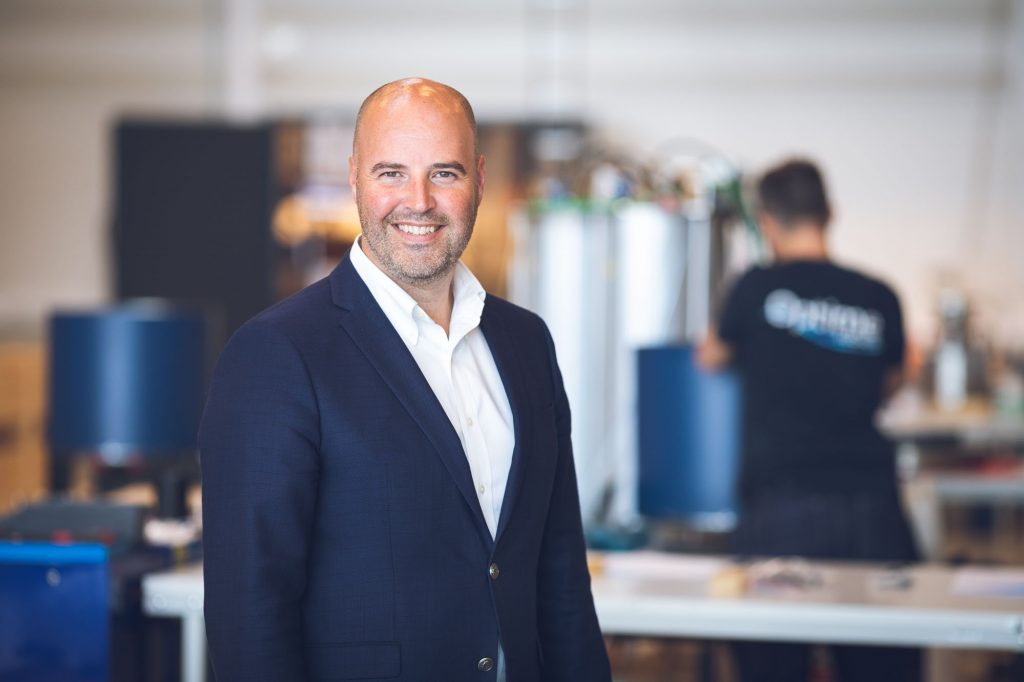Only a year after Aker BP completed its first well completion operation with the Remotely Operated Controls System (ROCS) from Optime Subsea, the Norwegian subsea technology company is now building ten similar systems without customers for all.
“The decision to make this upfront investment is based on our market position and the interest received from operators globally, as well as current global market disruptions including supply chain constraints. We naturally would not make this upfront investment if we did not believe we would secure a customer for every system,” says Jan-Fredrik Carlsen, CEO of Optime Subsea.

Jan-Fredrik Carlsen, CEO of Optime Subsea
Time and cost saver
Optime Subsea’s ROCS eliminates the need for the costly and heavy umbilical that runs from the topside to seabed to control the tubing hanger during completions of subsea wells. Without this umbilical, it is also possible to remove the costly and large topside hydraulic unit. As a result, the ROCS is up to ten times lighter than a conventional system.
The ROCS therefore provides substantial time and cost savings (capex and opex) versus conventional systems when conducting well completions. This, combined with the reduced weight, also provide a substantial reduction of the environmental footprint, health and safety and logistics costs.
Further, Optime Subsea’s ROCS is a modular well access systems that can be hooked onto any type of subsea well – both horizontal and vertical – at any water depth and utilized with all types of tubing hangers. It can be applied to completion of new wells, recompletions of existing wells, and for plug and abandonment purposes.
“Our ROCS is 100 percent universal, with a proven track record in reducing cost as well as health, safety and the environmental risks. This is another reason for why we are making the ambitious move of investing in ten newbuild systems. The ROCS can be utilized by any subsea field operator worldwide and immediately return these benefits to the operators,” adds Jan-Fredrik Carlsen.
ROCS is remotely controlled topside through and advanced controls unit. As it does not rely on communication through an umbilical or large topside equipment, it also has substantially lower energy consumption than conventional equipment. In addition, the ROCS does not require any personnel in the red zone of a drilling rig during operations, which is beneficial from a HSE perspective.
Investing for the future
In February last year, Aker BP completed the first well completion operation with ROCS, which was deployed on a production well on the Aker BP-operated Ærfugl field on the Norwegian continental shelf (NCS).
Since then, the ROCS has been applied to several wells, and interest in the ROCS technology is huge and constantly growing, with operators all over the world showing an interest in the new technology solution.
This has led Optime Subsea’s board of directors to approve the three-figure NOK million investment on ten ROCS systems.
“Our owners are financially solid and highly ambitious on our behalf. They understand that our technology is a vehicle to significantly reduce operators’ costs and carbon footprint, which underlines the commercial potential of the ROCS,” concludes Jan-Fredrik Carlsen.

3D illustration of the ROCS
The equipment will be manufactured and assembled at Optime Subsea’s headquarter and main manufacturing site at Notodden, Norway.
Optime Subsea has offices in Notodden, Norway, and Houston, Texas. Over the past five years, the company has established itself as a leading specialist on subsea intervention and controls systems globally.
ROCS details:
- When completing subsea wells, the tubing hanger is placed on top of the wellhead, as a seal towards the rest of the subsea well.
- Normally the tubing hanger is controlled through a dedicated hydraulic umbilical which adds a large 20-30 feet control container. When running the umbilical, it is also clamped to the tubing for increased stability.
- ROCS replaces these operations by remotely controlling a controls unit toward the wellhead. This allows for safer, simpler and more efficient operations.
- ROCS is mobilized in a single basket, prepared and made up onshore, allowing it to be ready to run immediately when offshore, from a rig.
Top image caption: A ROCS unit in Optime Subsea’s workshop at Notodden, Norway
